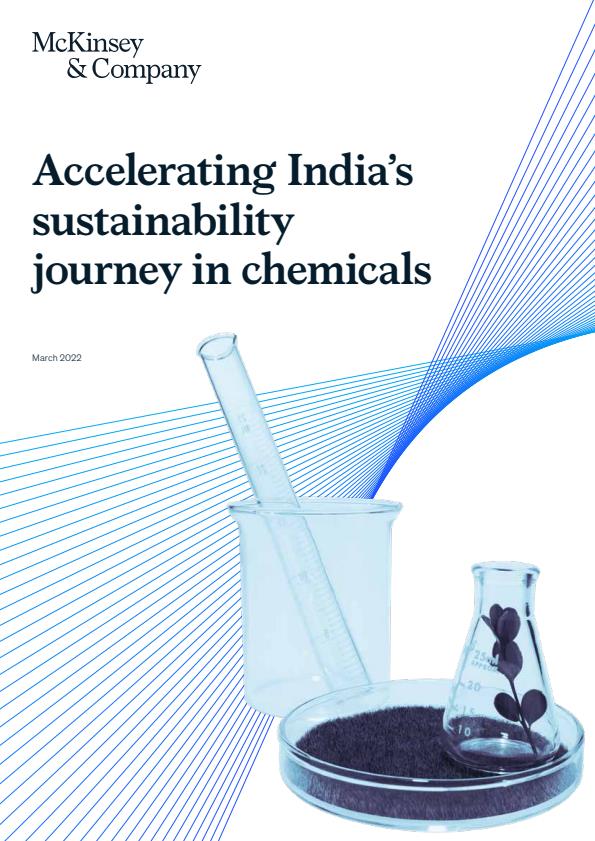Sustainability is taking center stage in society and the business world amid shifting demand from conscious customers, growing investor awareness, and stricter regulations. This is leading to greater scrutiny of environmental, social, and governance (ESG) considerations in chemicals, a sector that has historically been linked to environmental concerns due to energy-intensive operations, high greenhouse-gas (GHG) emissions, and improper waste disposal.
These concerns also reflect in the ESG scores of chemical companies. For example, in a McKinsey analysis of ESG scores across 100 global organizations, few chemical corporations appeared in the top quartile (scores over 71), and close to half scored in the bottom two quartiles (below the median of 43).
Several companies in the industry are already taking significant strides toward improvement by employing innovative technologies to cut down emissions, kicking off decarbonization efforts, and enabling other sectors to become more sustainable.
While these are important steps, the stark realities of climate change and environmental consciousness require the industry to do more. To begin with, more companies in the sector —both big and small—could take a holistic approach to ESG and strive to perform better on environmental metrics (exhibit). It may also be helpful to focus on the tangible benefits of ESG and sustainability—which could contribute to improved returns for shareholders and higher valuations for chemical companies.

Industry leaders embarking on their ESG journeys could look at three priorities as a starting point:
- Formulating an ESG vision and strategy. Companies could review current business practices to understand where they stand and what could be changed. They could then prioritize sustainability drivers that matter most and use this information to formulate a clear ESG vision and communicate it to all stakeholders.
- Improving decarbonization efforts. Since emissions are a major consideration in the environmental impact of the chemical industry, companies could focus on decarbonization efforts across different levels of emissions.
- Exploring green growth opportunities. Companies could develop products with a focus on sustainability to meet the needs of today’s environmentally conscious customers.
Finally, companies need additional enablers to execute their ESG strategy successfully. They could ensure cross-functional alignment on aspirations and priorities and strict adherence to timelines and guardrails set by the ESG vision. They could also strengthen teams traditionally leading ESG: health, safety, and environment; human resources; and corporate social responsibility. Learning from peers and their ESG strategies could prove to be enlightening and serve as a guide for leaders through their sustainability journey.



